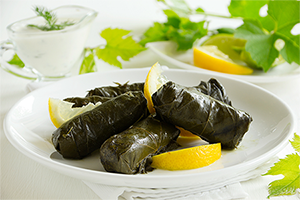Sunday, March 17, will be the Feast of Saint Dionysus. According to the Invisible Basilica of Sabazius, Dionysus was:
Also known as Bacchus, Iacchus, Bassareus, Trietenicus and Liber. Thracian god of ecstasy, terror, guilt and atonement, death and resurrection, vegetation, trees, wine, madness, and drama. Crowley thought Dionysus was “probably an ecstatic from the East,” and one of the principle models for the syncretic legend of Christ. Herodotus places the birth of Dionysus (i.e., his appearance in Greece) at c. 1600 b.c.e. See Krishna, Chapter 71 of Liber Aleph, Part III of The Heart of the Master, Chapter 7 of The Book of Lies, and The Book of Thoth, II:0. Both Dionysus and his father Zeus are closely associated with the earlier Phrygian deity named Sabazios.
The essay goes on to say:
The worship of Dionysus was savage and ecstatic, his votaries participated in orgia in which live animals (usually a spotted fawn, a goat, an ox or a bull) were torn apart and devoured raw. It was believed that the god entered the worshippers and possessed them through this Eucharist of living flesh, called the Omophagia. Animal skins and masks were worn, and a bull-roarer (rhombus) was used to simulate the thundering of Zeus.
In honor of Dionysus, please enjoy this delicious recipe with a glass of red wine.
Ingredients
- 60-70 fresh grape leaves or one 16-oz jar, drained grape leaves, stems removed
- 3⁄4 cup extra-virgin olive oil, divided, plus more for serving
- 1 large white onion, diced (2 cups)
- 4 large spring onions or 8 scallions, green parts only, thinly sliced (1 ½ cups)
- 1 1⁄3 cups finely shopped fresh dill (3 oz.)
- 1 2⁄3 cups finely chopped flat-leaf parsley (3 oz.)
- 1 cup finely chopped fresh mint (2 oz.)
- 1 3⁄4 cups (12 ¼ oz.) short grain rice, soaked in cool water for 10 minutes, then drained)
- Kosher salt and freshly ground black pepper
- 2 tbs fresh lemon juice, plus a few lemon wedges for serving
- Plain Greek yogurt, for serving (optional)
Instructions
- Bring a large pot of water to a rolling boil. Fill a large bowl 2⁄3 of the way with ice water. Add the grape leaves to the boiling water and cook until tenderized, 2 minutes. Remove the leaves using a slotted spoon or small strainer and transfer to the ice water. Once cooled, strain the leaves, and pat dry using a clean towel. Set aside.
- Set a large skillet over medium heat and add ¼ cup of the oil. Once hot, add the white onion and cook, stirring occasionally until softened, 5 minutes. Add the spring onions, dill, parsley, and mint and continue cooking until the onion is completely soft and somewhat translucent, 3-4 minutes more. Add the rice and 1 teaspoon kosher salt and cook, stirring constantly, for 2 minutes. Add 1 cup water and cook, stirring occasionally, for 10 minutes. Remove from the heat and season with salt and pepper. Set aside until fully cooled.
- Line the bottom of a large pot or Dutch oven with 3 layers of grape leaves (these will prevent the dolmakadia from scorching later).
- Working one at a time, place the remaining leaves, bottom-sides up with the points facing you. Place a generous tablespoon of filling in the center of each leaf, then fold the left and right sides over the filling. Fold the tip of the leaf over the filling, then roll tightly to make a roughly 2-inch by 1⁄2–inch cigar shape. Place the roll, seam side down, in the lined pot. Continue with the remaining leaves and filling, placing them tightly together in the pot and continuing onto a second layer as necessary.
- Place the pot on the stove and add 1 1⁄3 cups boiling water, the lemon juice, and the remaining ½ cup of oil. Bring to a simmer over medium heat, then lower the heat to medium-low and cover the pan; cook until the rice is tender and the leaves are very tender, about 45 minutes.
- Remove the pot and let cool. Serve the dolmakadia at room temperature or chilled, drizzled with olive oil and alongside lemon wedges for squeezing and Greek yogurt for dipping or topping.
(Source: Saveur)


